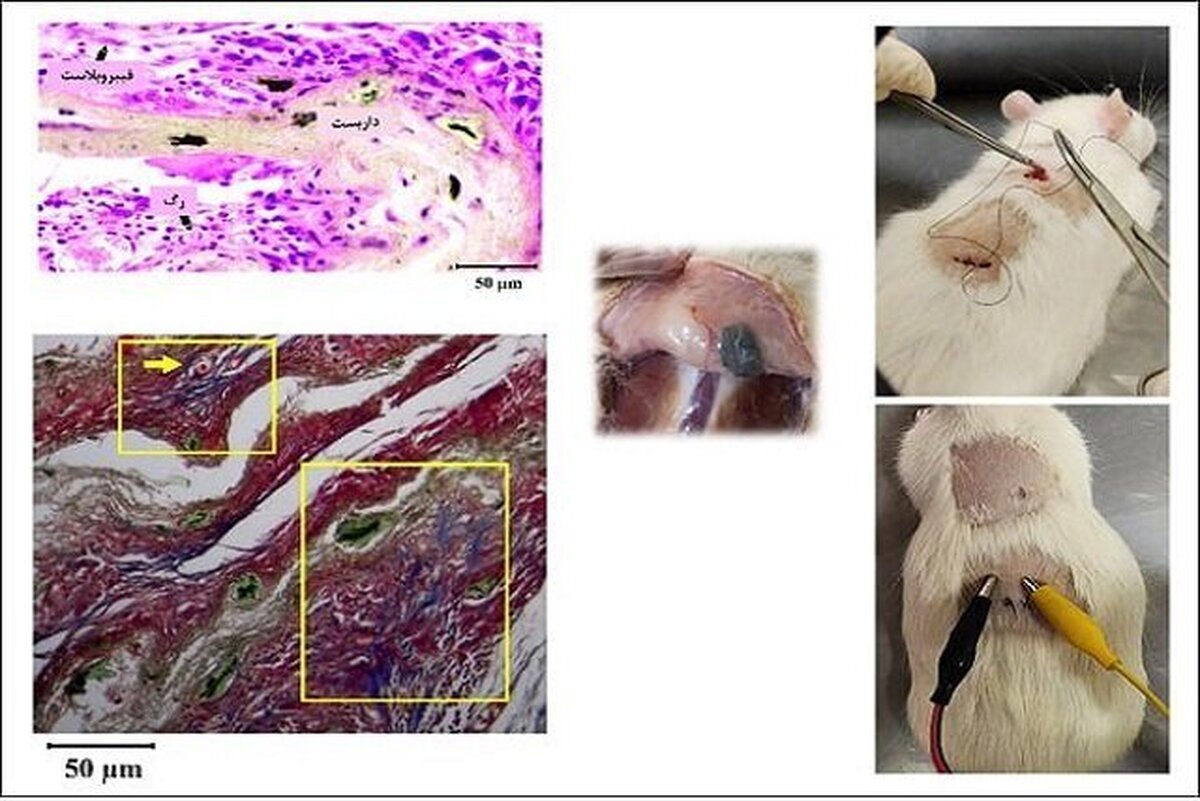Iranian Researchers Produce Conductive Bone Scaffolds

Zohreh Daraeinejad was a student of Amirkabir University of Technology and the executive director of the project "Designing and manufacturing of conductive scaffolds based on polyaniline/ion exchange polymer for tissue engineering applications" that was carried out under the supervision of Iman Shabani, the AUT professor.
“One of the new approaches in tissue engineering is the transmission of electrical signals to cells and the adjustment of cell behaviors,” she said.
Saying that electrical signal transmission to cells is done through conductive substrates, she added, “But since conductive scaffolds based on polyaniline come generally with the problems of conductivity instability and a little toxicity, they create problems for cell studies.”
“Therefore, in this project, a scaffold with excellent biocompatibility and special conductive properties was designed to lay a suitable substrate for conveying of electrical signals to cells,” the AUT researcher said.
“In this project, by using an ion exchange polymer as a carrier in the production of polyaniline conductive nanofibers and using lithium ion, we prepared a biocompatible scaffold with stable conductivity and energy storage capability,” she continued.
“This scaffold maintains its conductivity for a long period of time in the cell culture environment, does not have toxicity caused by toxic dopant, and improves cell behaviors such as proliferation and differentiation by releasing lithium ions,” Daraeinejad continued.
“The results of this research showed that the simultaneous use of conductive scaffold, electric signal and lithium ion can cause osteogenesis in the in vivo environment,” she said.
“The conductive scaffold prepared in this project, is not only used in all fields of study of medical engineering, including tissue engineering, drug release, biosensors and wound dressings, but also it is used in chemical and electronic industries such as battery manufacturing,” the AUT researcher further said.
She stated that the produced scaffold can be used as an electrical stimulus as well as a means to release ionic biological agents, adding, “Given the studies conducted on the research that has been published in prestigious scientific journals, the system in question is new.”
“In continuation of this research, we intend to work on the construction of conductive scaffolds with a function similar to a battery to stimulate body tissues, without the need for an external source of stimulation,” Daraeinejad further asserted.
“In this project, a conductive ion exchanger scaffold was prepared for use in tissue engineering. The biocompatibility of the scaffold was evaluated in vitro and in vivo and it had very good biocompatibility compared to the control samples,” the AUT researcher highlighted.
“Also, the capability of this scaffold for osteogenic differentiation of stem cells derived from adipose tissue in the in vitro environment and osteogenesis induction in rats was studied and very promising results were obtained,” she noted.
Referring to other features of the conductive bone scaffolds, she said, “Also, the effect of external electrical signal on the growth and proliferation and differentiation of stem cells and osteogenesis induction in rats was studied. The findings showed that the conductive scaffold containing lithium ion simultaneously with the induction of electric signal had a very effective role in the growth and proliferation and differentiation of cells and the osteogenesis induction in rats.”
Pointing to the competitive advantages of the project, she said, “Apart from tissue engineering and medical engineering in general, ion exchange conductive scaffolds are also used in other industries such as electronics and chemistry.”
4155/i





















